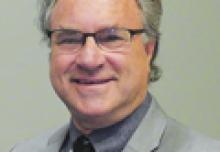RIVIERA BEACH, FL—“How do we take care of patients in 2016?” asked Robert Cowan, MD, at the 43rd Annual Meeting of the Southern Clinical Neurological Society. “We’re using the same model for healthcare delivery we have been using since 2500 BC,” he said. In headache medicine, a patient starts out with a headache and goes to see a primary care doctor. Based on the fund of knowledge that the doctor has in headache, he or she will come up with what hopefully is a reasonable differential diagnosis, work-up, and treatment plan. This approach may be successful or it may not. If it isn’t successful, more time will elapse before the patient is referred to a neurologist or headache specialist.
Robert Cowan, MD
At Stanford University, where Dr. Cowan is a Professor of Neurology, they looked at the patients coming in for headache care. “On average, it took 18 months from the time they went to their primary care doctor with a complaint of headache to the time they were seen at Stanford,” Dr. Cowan said. Eighteen months and a cost of around $12,000, he added.
There are just over 500 board-certified headache specialists in the United States. There are about 60 million people with headache, about 37 million people with migraine, and about 4% of those patients have chronic migraine. “Right now there are not enough specialists,” Dr. Cowan said. “The challenges are economic, geographical, and institutional.” And in some areas of the world, the situation is far worse.
Beyond the problem of scale—the patient population versus the health care providers available to diagnose and treat them—there is, according to Dr. Cowan, a triage problem. Which patients with headache are easily managed and which ones require specialist care? “To be seen at Stanford, there is about a three-month wait right now, despite the fact that we have six board-certified headache specialists in our division,” Dr. Cowan said. “We don’t have effective ways of triaging from primary care through subspecialists.” The solution has been to try to turn primary care doctors into specialists. “It doesn’t make sense to keep turning to the primary care doctor as a gatekeeper for every patient.”
From a time-management and economic perspective, headache care can be viewed as neurology’s loss leader. “On average, a physician spends seven to 20 minutes with a patient,” Dr. Cowan said. “With a complex patient, I can’t get a decent history in an hour. I don’t know how I can get a decent history in seven minutes. If I’m practicing in India or China, I have 2.5 minutes to get a decent history and formulate a treatment plan. There is a disincentive to provide good care. If you are a fee-for-service physician, spending more time costs you money. If you are a salary-based physician, why would you want to see more patients per day? We don’t have great incentives for physicians to fix this.”
Online Patient Prescreening
Technology can help address some of these problems. One solution is prescreening, Dr. Cowan said. “We can collect data before the patient gets the appointment.” Dr. Cowan, Alan Rapoport, MD, and Jim Blythe, PhD, have created a detailed online questionnaire that is very detailed. It takes, in general, about an hour to complete. It generates a narrative report that is tied to a rule engine. The elements in the patient history are compared with International Classification of Headache Disorders (ICHD) diagnostic criteria, and a clinical impression similar to a differential diagnosis is generated. It documents diagnostic red flags, medication history, and other elements. For example, “There are elements in your history that suggest you may have a secondary headache. Here they are. You might want to discuss these with your physician.” The patient can either send that report electronically to his or her primary care physician or print it out as a PDF and carry it. The questionnaire can also be done with voice activation over the phone and faxed to the clinic—a benefit in countries without access to computers or smartphones. One benefit of this online tool is that it saves the physician the time of having to ask basic questions that are already covered in the narrative report.
The online questionnaire Dr. Cowan referred to is part of BonTriage, a start-up he and Drs. Rapoport and Blythe created. It is designed to help triage and monitor patients with headache and bring specialized care to underserved patient populations. At present, the service is free to patients.
“This is not intended as a replacement for an in-person history,” Dr. Cowan said. “But it does save a lot of time. The other advantage of it is that you have expert opinion in advance of the visit. You’ve got a differential that you know is tied to hard data.”


